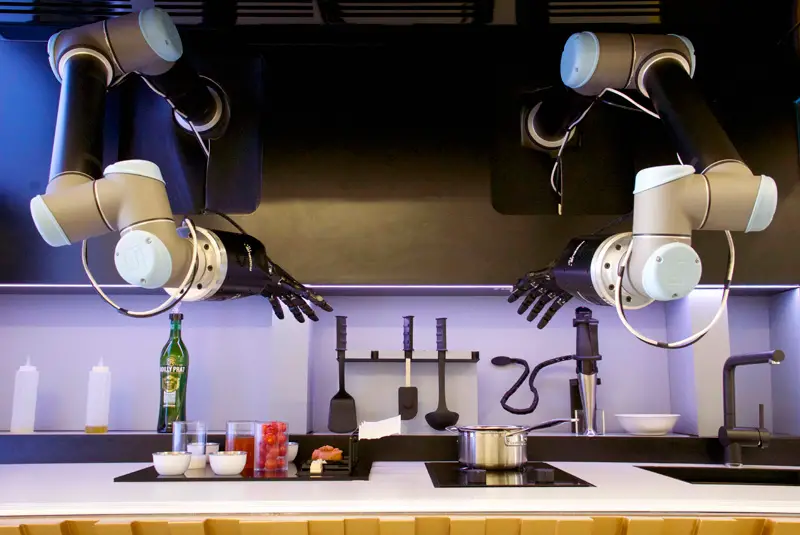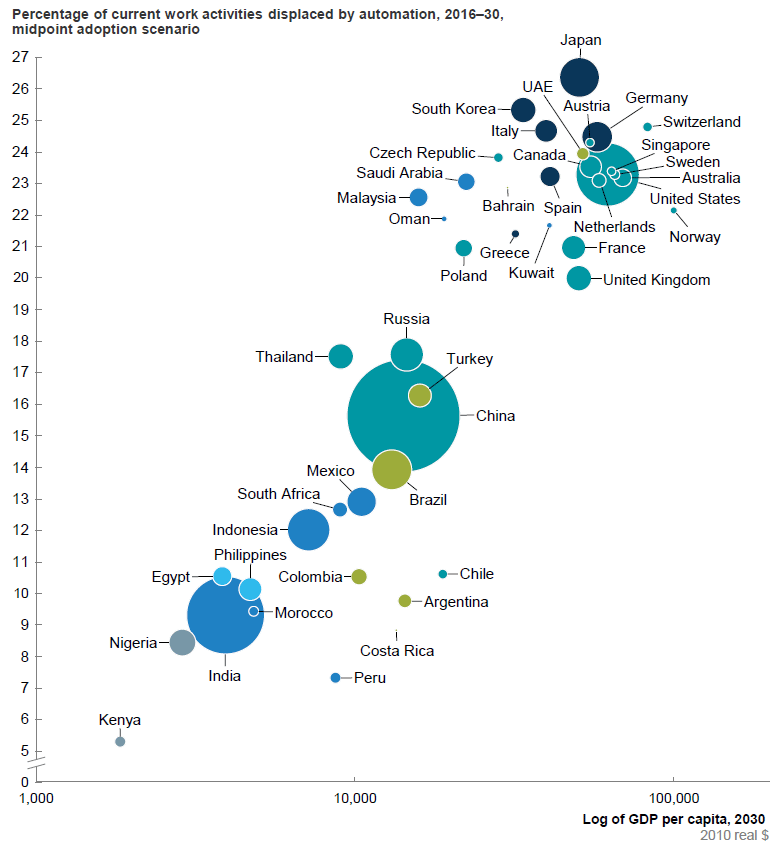
1st December 2017 800 million jobs could be lost to automation by 2030 A report by the McKinsey Global Institute (MGI) concludes that up to 800 million jobs could be lost due to robotic automation by 2030.
Rapid advances in technology will eliminate vast swathes of jobs in the next decade, according to a report – Jobs Lost, Jobs Gained: Workforce Transitions in a Time of Automation – published today by the McKinsey Global Institute (MGI). "The development of automation enabled by technologies including robotics and artificial intelligence brings the promise of higher productivity (and with productivity, economic growth), increased efficiencies, safety, and convenience," says MGI. "But these technologies also raise difficult questions about the broader impact of automation on jobs, skills, wages, and the nature of work itself." The report, which looks at 46 countries and 800 occupations, concludes that approximately half of all work activities have the potential to be automated using current technologies. The percentage of work actually displaced by 2030 will be lower, however, due to technical, economic, and social factors that affect the rate of adoption. Among those hardest hit will be machine operators and food workers. Jobs requiring human interaction such as doctors, lawyers and teachers are less at risk, along with certain "specialised" low wage jobs, such as care work, gardening and plumbing. There is wide variation across countries. Advanced economies will be more affected by automation than developing ones, due to higher wage rates and thus economic incentives to automate. Germany, Italy, Japan, South Korea and Switzerland could see approximately one-quarter of current work activities displaced by automation, based on MGI's "mid-point" scenario for 2030. At the lower end of the spectrum, India and Nigeria would see less than 10% of work displaced and Kenya just 5%. Nations roughly in the middle of the range include Brazil, China, Russia, Thailand and Turkey. In the USA, between 39 and 73 million jobs could be eliminated by 2030, with 20 million of those displaced workers able to easily transfer to other industries, according to MGI.
MGI notes: "Our view is that the recent technical advances, enabling machines to read lips or X-rays more proficiently than human experts, for example, are indeed remarkable and that if this pace of innovation continues, rather than encountering a new AI 'winter', the rate of automation innovation could be faster than in the past. If so, the potential disruption of workforce models and displacement of labor could be greater than past technological revolutions." While many jobs will be lost, MGI believes there is potential for many new roles to be created: "Our findings suggest that several trends that may serve as catalysts of future labor demand could create demand for millions of jobs by 2030. These trends include caring for others in aging societies, raising energy efficiency and meeting climate challenges, producing goods and services for the expanding consuming class, especially in developing countries, not to mention the investment in technology, infrastructure, and buildings needed in all countries." "To achieve good outcomes, policy makers and business leaders will need to embrace automation’s benefits and, at the same time, address the worker transitions brought about by these technologies," concludes MGI. "Ensuring robust demand growth and economic dynamism is a priority: history shows that economies that are not expanding do not generate job growth. Mid-career job training will be essential, as will enhancing labor market dynamism and enabling worker redeployment. These changes will challenge current educational and workforce training models, as well as business approaches to skill-building. Another priority is rethinking and strengthening transition and income support for workers caught in the crosscurrents of automation."
Comments »
If you enjoyed this article, please consider sharing it:
|








